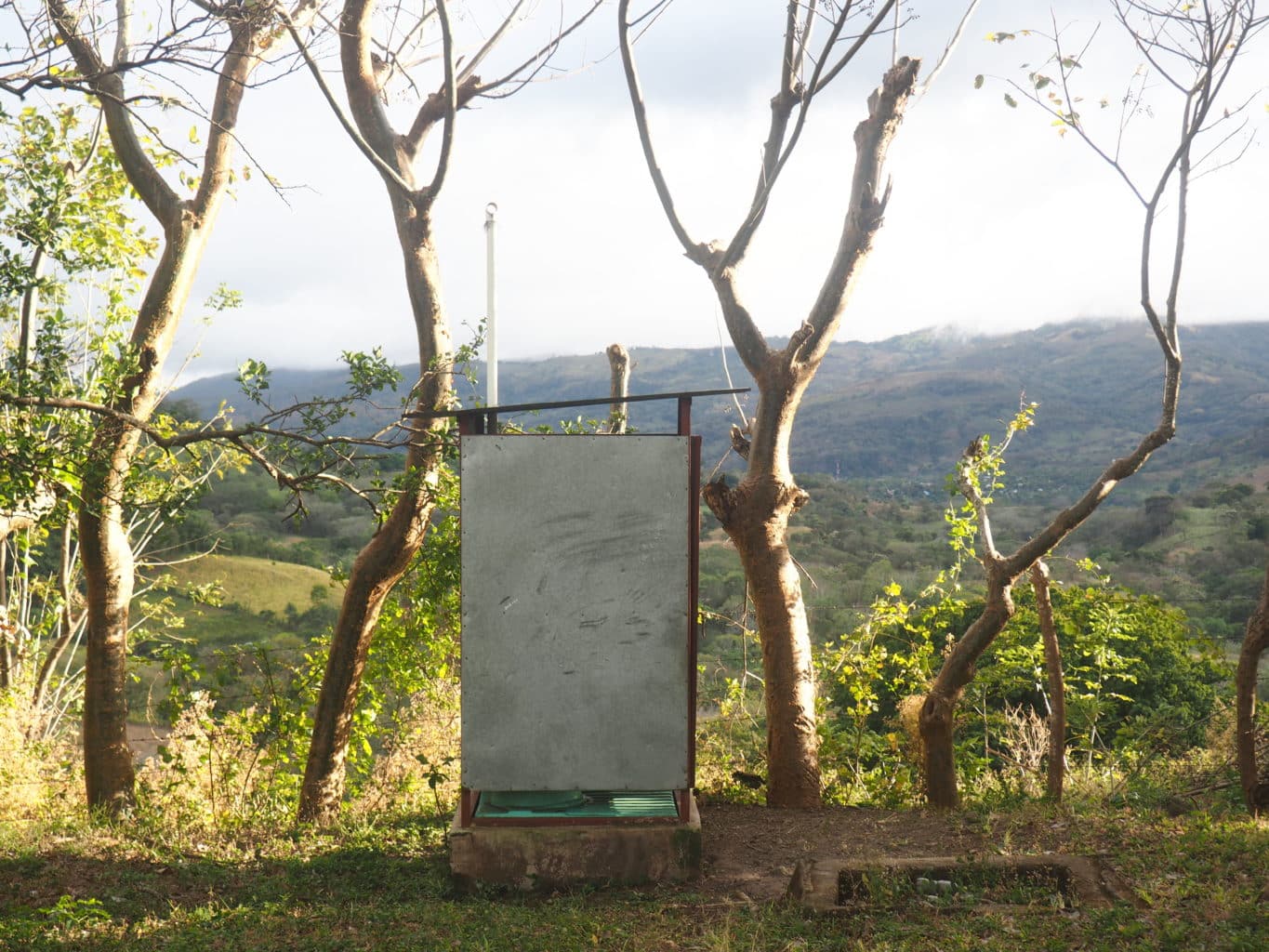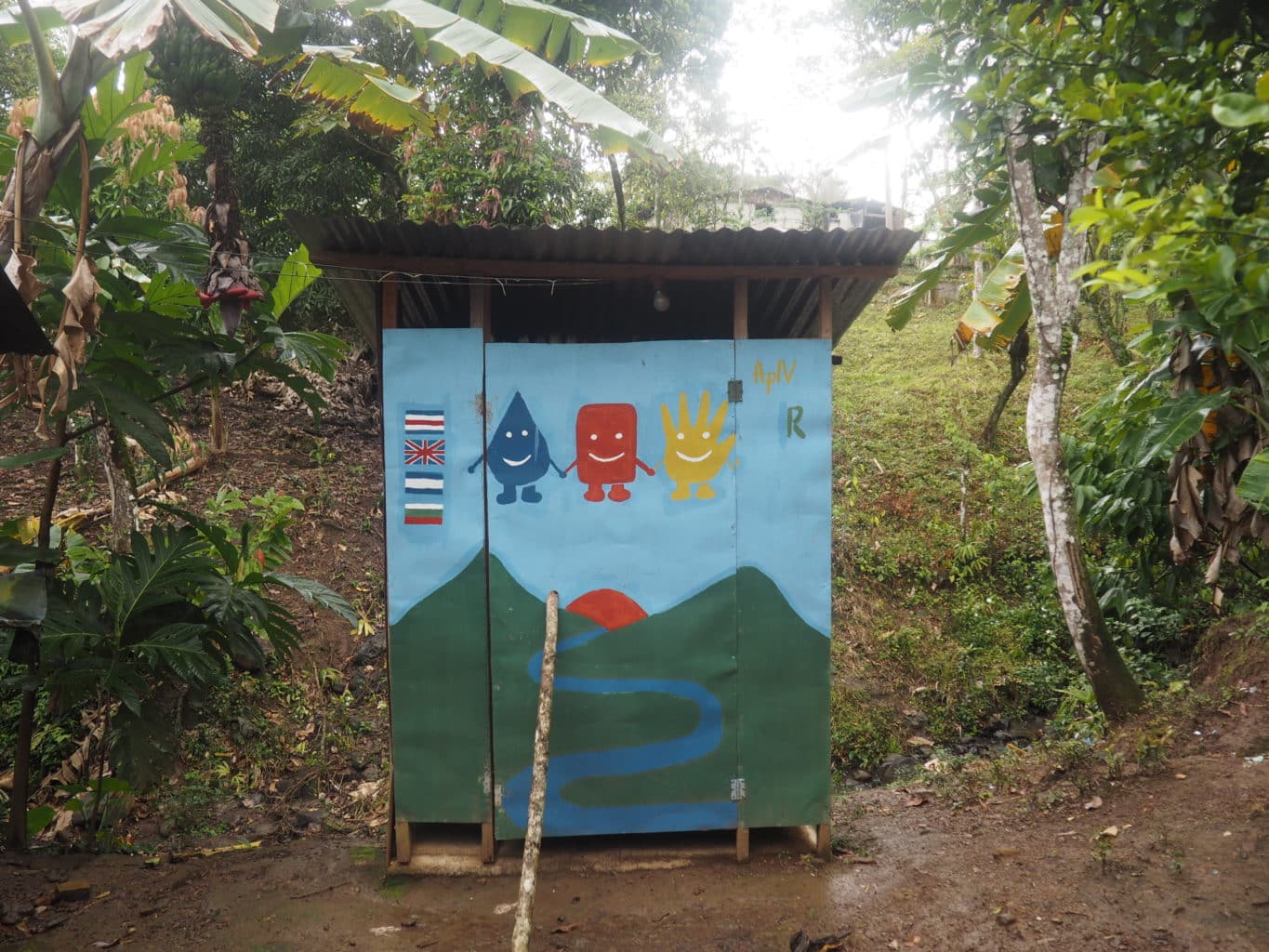What Are Eco-Toilets and Compost Latrines?
Home | Costa Rica |
Eco Toilet/Inodoro Ecológico
An Eco Toilet can be built inside or outside the home. It consists of a toilet seat, a sealed sceptic box where the waste is stored, a water filter and a long, tall pipe for the excretion of fumes and oxygen. It can last for 20 years or more if it is maintained well.
Before you can use the Eco Toilet you must fill it with 100 litres of water (meaning it is not an ideal choice for communities that have a limited access to water). Waste is washed down with approximately two litres of water and then travels into a sealed sceptic box. Due to the water and gravity, the liquid goes through a filter box which is filled with rocks. The liquid is filtered through the rocks and then is released into the ground.
The waste in the box decomposes due to bacteria and only needs to be cleaned once every two to three years.
We heavily promote the use of eco-toilets as they are sustainable, hygienic, private and safe. We can build them within the home, which minimises the risk and danger of walking to the toilet in the dark and it also limits odors if used correctly.
Se puede construir un Eco-inodoro dentro o fuera del hogar. Consiste en un asiento de inodoro, una caja séptica sellada donde se almacenan los desechos, un filtro de agua y una tubería larga y alta para la excreción de humos y oxígeno. Puede durar 20 años o más si se mantiene bien.
Antes de que pueda usar el inodoro ecológico, debe llenarlo con 100 litros de agua (lo que significa que no es una opción ideal para las comunidades que tienen acceso limitado al agua). Los desechos se lavan con aproximadamente dos litros de agua y luego se desplazan a una caja escéptica sellada. Debido al agua y la gravedad, el líquido pasa a través de una caja de filtro que está llena de rocas. El líquido se filtra a través de las rocas y luego se libera al suelo.
El desecho en la caja se descompone debido a las bacterias y solo necesita ser limpiado una vez cada dos o tres años.
Promovemos fuertemente el uso de eco-sanitarios ya que son sostenibles, higiénicos, privados y seguros. Podemos construirlos dentro del hogar, lo que minimiza el riesgo y el peligro de caminar hasta el inodoro en la oscuridad y también limita los olores si se usan correctamente.
Compost Latrine/Letrina de compost
A Compost Latrine is split into two cubicles with two separate toilets. It doesn’t require any water and produces organic compost after six months. It is a dry toilet, which is filled with either chalk or ashes and some sand. Every time it is used, more chalk or ashes with a bit of sand are added to the toilet (a flushing substitute).
Every month or two the waste in the latrine needs to be mixed. The toilet seat is divided into two sections – one for liquids and one for solids. The liquid is filtered out so only solids are left in the box to decompose. When one box is full, it is left for 6 months and the second toilet is then used. There is a small door at the back of the latrine where you can remove the organic compost after 6 months. This compost can then be used by the community for plants and trees and the liquid is transformed as urea, which can be used as liquid fertiliser for soil.
A compost latrine is more expensive to build as it needs more materials and requires more maintenance. However, it’s a popular choice for families who are keen to use the compost on their land and it doesn’t require water, which is important when water is scarce in certain areas.
Una letrina abonera se divide en dos cubículos con dos inodoros separados. No requiere agua y produce abono orgánico después de seis meses. Es un inodoro seco, que está lleno de tiza o cenizas y algo de arena. Cada vez que se usa, se agregan más tiza o cenizas con un poco de arena al inodoro (un sustituto de lavado).
Cada mes o dos los desechos en la letrina deben mezclarse. El asiento del inodoro está dividido en dos secciones: una para líquidos y otra para sólidos. El líquido se filtra por lo que solo quedan sólidos en la caja para descomponerlos. Cuando una caja está llena, se deja durante 6 meses y luego se usa el segundo baño. Hay una pequeña puerta en la parte posterior de la letrina donde puedes quitar el compost orgánico después de 6 meses. Este compost puede ser utilizado por la comunidad para plantas y árboles y el líquido se transforma como urea, que puede usarse como fertilizante líquido para el suelo.
Una letrina de compost es más costosa de construir ya que necesita más materiales y requiere más mantenimiento. Sin embargo, es una opción popular para las familias que desean utilizar el compost en sus tierras y no requiere agua, lo cual es importante cuando el agua es escasa en ciertas áreas.
Over the next three months, our volunteers will be working hand-in-hand with our communities to build sanitation facilities such as, eco-toilets and compost latrines. As well as, to raise awareness about the importance of practicing safe hygiene and sanitation.
En los próximos tres meses, nuestros voluntarios trabajarán codo a codo con nuestras comunidades para construir instalaciones de saneamiento, como baños ecológicos y letrinas aboneras. Además, para crear conciencia sobre la importancia de practicar una higiene y un saneamiento seguros.
Words and Images by Communications Officer: Lydia Giles
Palabras y Imágenes del Oficial de Comunicaciones: Lydia Giles
Want to find out about the other projects we’re going to be working on over the next three months? Check this out.
¿Desea conocer los otros proyectos en los que vamos a trabajar durante los próximos tres meses? Mira esto.
Keep in touch with any of our volunteers by completing this contact form.
Manténgase en contacto con cualquiera de nuestros voluntarios al completar este formulario de contacto.





